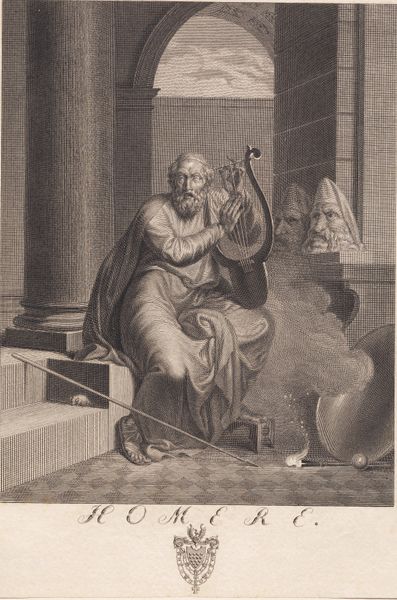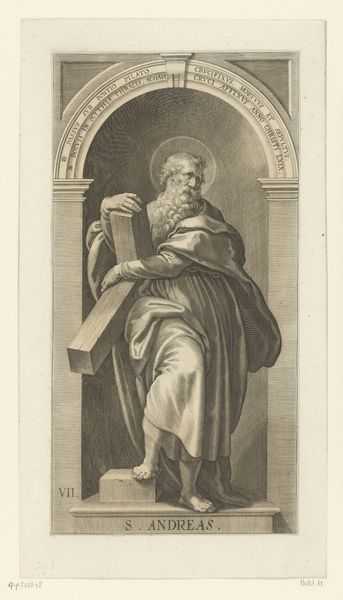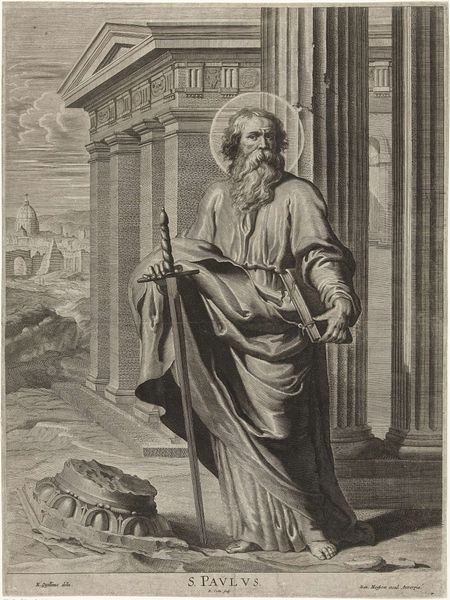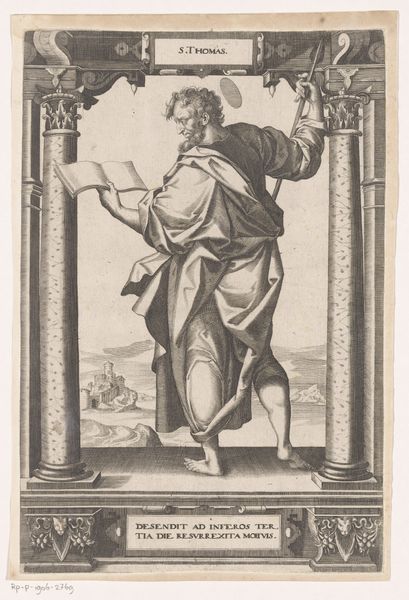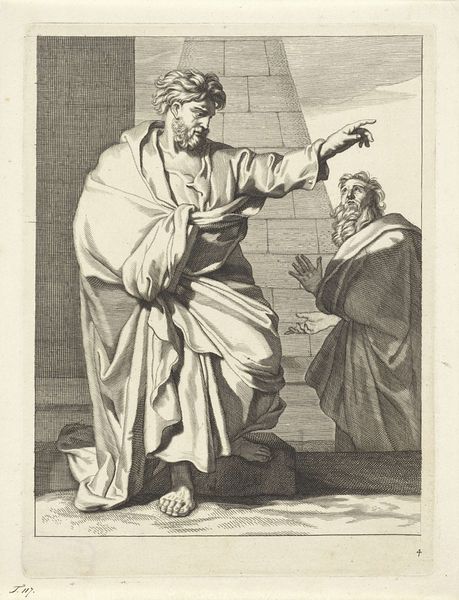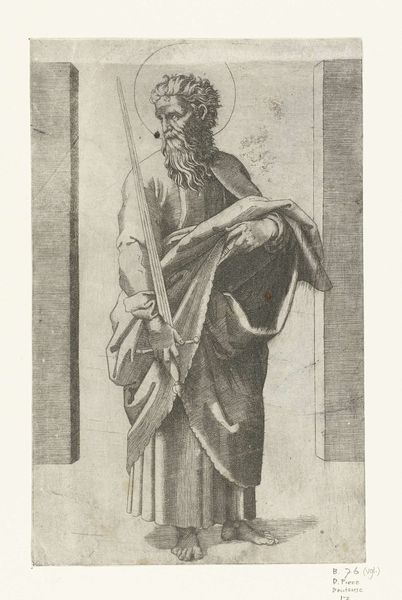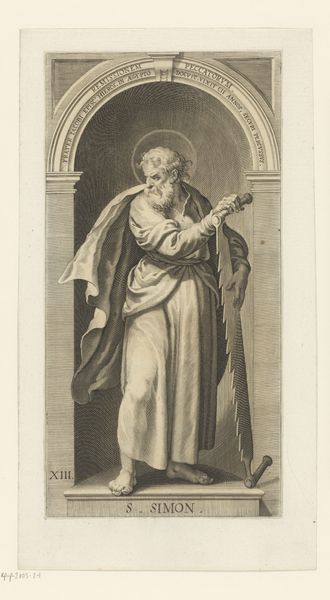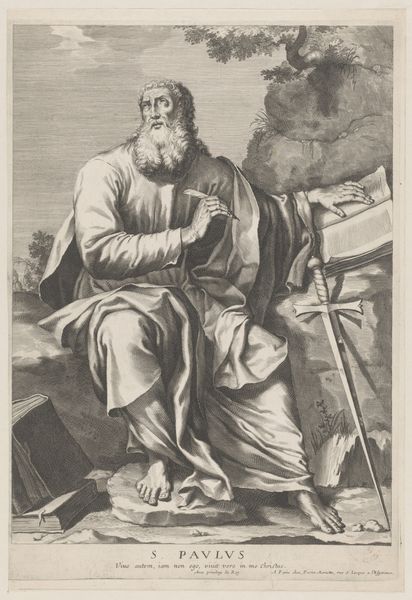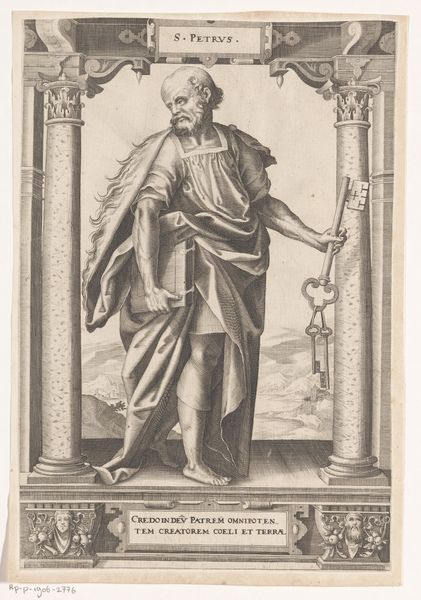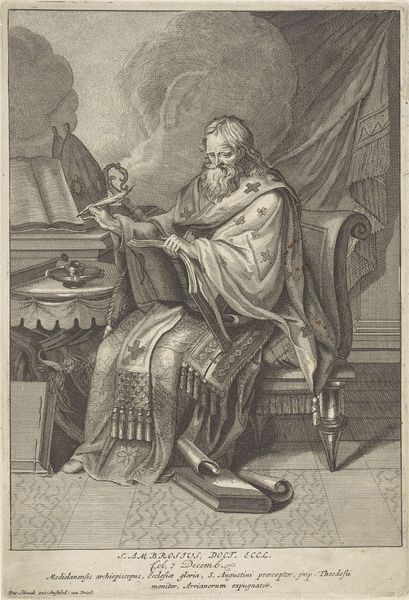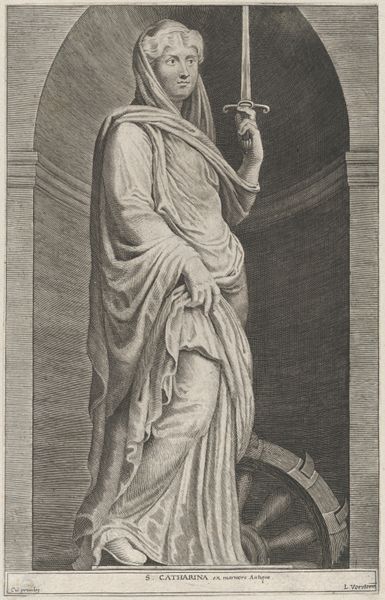
print, etching, engraving
#
portrait
#
neoclassicism
# print
#
etching
#
old engraving style
#
classical-realism
#
history-painting
#
engraving
Dimensions: 343 mm (height) x 243 mm (width) (bladmaal), 310 mm (height) x 226 mm (width) (plademaal), 245 mm (height) x 196 mm (width) (billedmaal)
Curator: At first glance, this piece gives off the impression of a stage, perhaps during intermission. It has this quiet energy. Editor: Precisely. Let’s delve into this enchanting piece titled "Homer," an etching crafted in 1813 by J.F. Clemens. Curator: You say "etching," I see layers of time and classical ideals mingling together. It almost whispers tales of forgotten heroes and long-lost knowledge. The stark monochrome makes me wonder about truth versus presentation, particularly for Homer. He wasn't composing with a lyre here. Editor: You bring up a compelling point! In Neoclassical fashion, Clemens isn't just portraying Homer but invoking the essence of the 'idea' of Homer as a cornerstone of Western literature. Consider the lyre as an emblem, a signifier of epic poetry, complemented by that solemn backdrop featuring both column and bust fragments, setting the stage, quite literally. Curator: Absolutely, it’s the classical packaging, but I sense more. The presence of a spear feels jarring against his bard's instrument; as though conflicting, they suggest some heroic connection as well as inner turmoil. Do we need to consider how historical elements intersect with human vulnerability to see the portrait's complexity more? Editor: An insightful parallel! What resonates profoundly is its function as more than just a likeness; this portrayal invokes centuries worth of historical interpretation and veneration for cultural continuity—Homer isn't just some man, he represents an entire tradition. Curator: Yes, looking closer at this work as a matrix, you know… each strike of the etcher’s needle builds up not only shape and figure, it lays down cultural history like sediments. What you called classical tradition might mean a canon that also carries both glory and pressure in this picture. Editor: A perfect conclusion—it seems within this quiet etching stirs much conversation; through symbolic gestures within the visual representation itself we discern entire literary-historic narratives. Curator: Definitely something that holds lasting significance. The work encapsulates entire ages of respect and thoughtful scrutiny within an ostensibly "simple" portrayal!
Comments
No comments
Be the first to comment and join the conversation on the ultimate creative platform.
